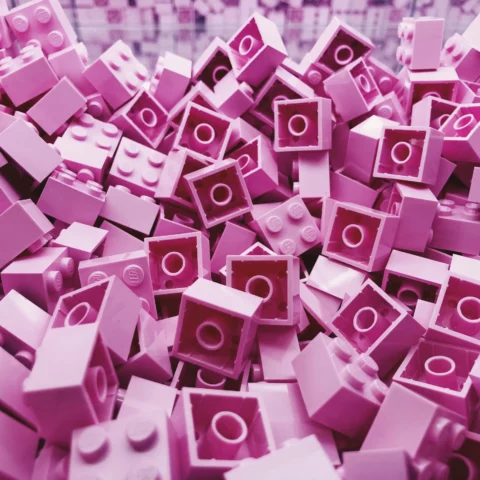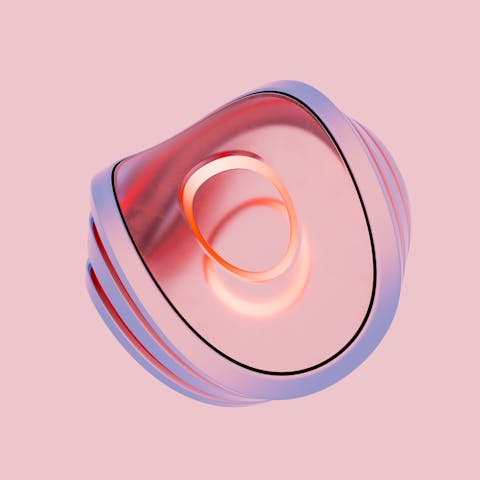Gain valuable UX design insights from Ben Little, Director of Design Innovation at Massachusetts College of Art and Design and VP of Design at Fidelity.
In this article, Ben, an influential figure in the design space with over two decades of experience, shares invaluable tips on navigating a design career amidst rapid innovation. From embracing AI technologies to rethinking design roles, explore the future of design and how to thrive in an evolving landscape.
Read on for more about these UX design insights:
- Understand the impact of AI on the design industry and its potential as a tool for productivity.
- Learn from Ben’s techno-optimistic view on the benefits of AI and its role in freeing up designers’ time for more meaningful work.
- Explore how AI can enhance the creative process and guide design teams to produce better results.
In the words of the freewheelin’ Bob Dylan, the times they are a-changin’.
“The future informs design. What is the majority of design if not focused on bringing something new into the world?” Ben said.
So how do you design for the future when we can’t even predict what’s happening tomorrow? Ben asks himself this question every single day. He’s spent the last 20 years scaling corporate design programs and building his learnings into a hybridized design and business graduate program at MassArt.
Ben offered his unique dual perspective — a firsthand, industry overview of the rapid evolution in design, and how he shapes the minds of next-gen designers. He shared sound advice for navigating a design career, no matter the stage you currently find yourself at.
Watch the entire conversation about good design, done well.

Future of UX Design: a Dynamic Frontier
Gmail was finishing our sentences years ago. Today, artificial intelligence (AI) tools merely require a prompt, and they perform all the heavy lifting for you.
AI is here to stay. As creative professionals such as designers and researchers confront this ever-changing horizon, it begs the question(s)…is AI a help or hindrance? What does the future hold for designers? Will machines replace them? Ben weighed in on the debate.
The Role of AI in UX Design Insights
A self-proclaimed “techno-optimist”, Ben is bullish about the benefits of using AI. He cited Marvin as an example of how new technology breeds productivity. Ben’s anthropological and design research background required him to learn transcription and data coding by hand (Gen Z readers might not be familiar with this concept). Marvin’s live transcription and AI notes automate a laborious yet important skill, freeing up time for designers to concentrate on other avenues.
“I think it’s really a superpower to be able to use some of these new technologies and refocus and rebalance some of our efforts,” Ben said.
Without specialist tools in the past, designers have never had a chance to examine and tweak their approach to work. It’s all about finding where AI can assist you in producing better work, and help guide your team better.
Rise of the Machines: Are They Coming for Our UX Design Jobs?
Without further ado, let’s get to the existential question that’s been on every creative professional’s mind:
Will machine replace man?
Creativity is a function of the environment around us and our exposure to various stimuli. Cynics might say that all human creativity is derivative. So what’s to stop AI and machine learning from leveraging vast amounts of data (far beyond what a human can process) from churning out derivative ideas or products?
“I think it does raise the stakes for what it takes to be perceived as novel, because now I can mimic that derivative path,” Ben said.
In any creative endeavor, one looks for originality, authenticity and novelty. As automation and machine generation continue to pervade every category, Ben thinks this only brings more power to handcrafted design.
He referenced examples of two unlikely comebacks — the letterpress and a plethora of candle makers in his hometown.
“We saw the rise in the importance of human-crafted material — the touch of the human hand, and even the imperfections that come with it have come back into our society,” he said.
The answer to the question is clear.
“Personally, I am a little less scared. I genuinely believe we will never really get to a point where someone can click a button and get the organizational intent and core idea, the ‘why’ we are doing something,” Ben said.
Design Identity: Rethinking the Role of a UX Designer
Amidst a backdrop of rapid automation, there’s stiff competition for design roles in the current job market. As the industry undergoes a reshuffle, companies are rethinking and modifying design and UX research roles. Moving forward, what does it mean for designer’s everywhere?
According to Ben, it’s an ideal opportunity to remodel the design field overall (with UX research a part of that). He encourages designers to carve the vast world of design up and ask themselves — what’s interesting to you?
“The field of design is getting higher minded about some things and wielding that point of view in the interview process, making it clear that you’re not there just to push pixels around,” he said.
It’s important not to lose sight of the fact that design is a creative craft, keeping one foot in the present with an eye out for the future. Speaking of, Ben predicted that future design roles will not only focus on the crafted output, but designers acting as facilitators of human interaction.
“Design is increasingly about meaningful intention and humanity and bringing in a point of view that is not just about the skills,” he said.
Future Design Skills
Over to skills… Which ones are essential for future designers?
Ben is always keen to experiment with cutting-edge tools and technology; he sees it as a natural progression for designers. They’ve come a long way from drawing, using scaling tools and compasses to mastering the intricacies of software, becoming all-round digitally savvy.
Designers have had to continually learn to speak different languages over time:
According to Ben, the next stop is clear. All roads lead to AI. Does this mean current and future designers must learn the intricacies of crafting AI prompts?
It helps. To future-proof your repertoire of skills, Ben preaches the importance of being able to flex in many different directions. He’s currently baking UX Research into the curriculum at MassArt, equipping designers with practical research skills they can employ in their professions.
Are All Mid-Career Designers Burning Out?
In the throes of all this innovation, a worrying trend is emerging. Ben’s colleague at MassArt investigated why we don’t see enough people with design backgrounds in leading corporate roles. He found that employees are abandoning design roles in their mid-40s. Senior designers are burning out, leaving their roles or even switching careers altogether in a mid-career slump.
What’s causing this mass exodus as designers approach the midpoint of their careers? Ben outlined two of many factors:
- Pigeon-holing effect. “We start off in design careers, often specialize pretty early (on). It can be hard to get that cross functional experience that allows us to move up and navigate throughout an organization, (and) get the P&L experiences required to (be) given more responsibility,” he said.
- Low hit rate. Through their work, designers and researchers see endless possibilities to make the world a better place. However, only a small percentage of these ideas come to fruition. “Design is an active service. We are often toiling on behalf of users and stakeholders, and within a lot of these constraints of what everybody needs and wants, we have this window for creativity, which can be a bit small, the empathy can be a bit exhausting and depleting,” Ben said.
A company’s maturity, organizational willpower, its view around design and pragmatism ultimately dictate which design efforts will be backed. Helplessness leads to disillusionment among designers who are unable to see the fruits of their labour. “Are we getting to pull the strings on deciding what goes out into the world?” Ben asked.
An MBA and over 20 years later, people still approach Ben with requests to create a nice PowerPoint presentation. He’s quick to remind them that his gamut of skills extends far beyond basic design. Exhausting stuff.
Rebounding from Burnout
As designers travel further down the road in their careers, their window of creativity gets smaller and smaller. There’s a heavy ethical load on a designer’s back – they take a lot on board, having to constantly be empathetic with end users and stakeholders. This inevitably leads to exhaustion and emotional depletion. If these mid-career slump symptoms sound all too familiar, never fear. Ben provided simple advice on how to recharge your batteries:
“Find balance (with) what replenishes you in the work,” he said. It’s vital to know yourself — what inspires or replenishes you?
Ben and his team recently examined resting periods of Olympic and world-class athletes. Their overarching question — are rest periods a break from work or a break for work?
“For athletes, recovery doesn’t look like sitting on a couch with a beer,” said Ben.
Athletes use time in between events to actively recover from their exertions. So what does a similar recovery look like for creative fields such as design?
When Ben began at MassArt, he perceived a divide between the design and artistic sides of the building. With his sole focus on designing digital products and services, he couldn’t see any intersection between the two. How wrong he was — he now acknowledges that immersing oneself in the artistic side is a great balancing force. For a quick creativity replenishment, Ben and his team recently visited a museum to help harness some inspiration and hone in on inventiveness.

Career Advice for UX Designers
Finally, Ben used some memorable stories from his career to convey helpful pointers for designers and researchers alike:
Pragmatism First
Given the current economic climate, there’s a certain pragmatism you must be aware of. Don’t get too picky with trying to attain too much emotional fulfillment from every role. Be aware of what you’re picking and what you’re giving up (opportunity cost, anyone?). Navigate your own needs and pace. At the end of the day, everyone’s got bills to pay.
For designers and researchers in the early stages of their careers, Ben encouraged more risk taking. “Use time in school and earlier in your career to push boundaries and show what you can do,” he said.
When quizzed about learning from mistakes he’s made in the past, Ben admitted instances where he’d chosen money over fulfillment during his career. Impostor syndrome set in — he took a long time to acknowledge that he’s actually part of the design field. Everyone is in constant motion, figuring out their path as they move along. Ben’s take? Embrace it.
Pick the Winners
Ben approached an acquaintance early on in his career and asked, “How have you been so successful?” The advice he received was surprisingly universal, applicable to any field, and has served Ben immensely throughout his career.
The colleague responded, “I pick winning projects – projects that are going to do well.” A sharp, keen eye for identifying ‘future trash’ or ‘future shelfware’ projects is an invaluable trait.
Develop an awareness of projects you’re picking up. Learn to identify the ones that will go the distance.
Influence Decision Making
One of the ultimate goals of research is to carry weight with higher-level decisions. This sounds all too familiar — Gina Rahn of LINQ and Vanessa Whatley at Twilio both highlighted the importance of the cultural shift to a more strategic mindset.
For new researchers at a company, or low maturity research teams, weighing in on these decisions can be a challenge. At Fidelity, a company with a headcount of over 70,000, it can be difficult to build influence around design and research. Ben has a simple bit of advice here:
“Do something valuable for them, be of value,” he said.
Design is an act of service. Offer your assistance to people, always keeping in mind the questions — What’s the decision they need to make? What data do they need?
Tell the Story
Designers and researchers are storytellers. A surefire method to drive home their insights and influence decisions is to build a coherent story.
“How do I let people come to similar conclusions? By seeing similar data put into the themes that I’ve observed. My role suddenly becomes less (of) interpretation. Still important, the interpretation, but more about (the) curation of that story so that I can persuade people to see the same thing I saw. I’m avoiding a rabbit hole there long term,” said Ben.
We’re big fans of video as a storytelling tool at Marvin. It helps to hear from customers directly. Let the story do the work for you.
Show Your Work!
Ben harks back to the 4th grade, when he argued with his math teacher about showing his work on a test.
“If I’ve got the right answer, why do I need to show the work?” quipped young Ben. Her insistence that he show his methodology stuck with Ben for the rest of his school years and throughout his career.
A lot of times, people who approach UX designers or researchers are only eager to see conclusions, not the work. They want to know the top-rated feature or top-rated product concept. Ben’s outlook is different — he’s adamant that research artifacts are very important.
“It’s so easy to take the sample size, grounding question and methodology and move all that to the appendix. Personally, I think it’s important because you’re telling them the theory behind it, why it’s different, what we did and showing all the stuff that went into it. Different audiences are going to have different feelings on that,” he said.
Future Outlook for UX Designers and Researchers
Finally, Ben offered encouragement and motivation for designers and researchers:
“As the pace of change keeps increasing for our work, meaningfulness will also keep increasing. The intention, the understanding, the complexities of what’s actually going to lead the planet, society, culture, the things that sustain the human beings we’re serving through design, those questions are going to keep getting bigger and harder to manage, so keep at it.”
Photo by UX Indonesia on Unsplash




